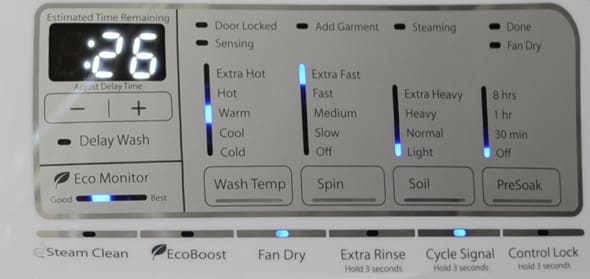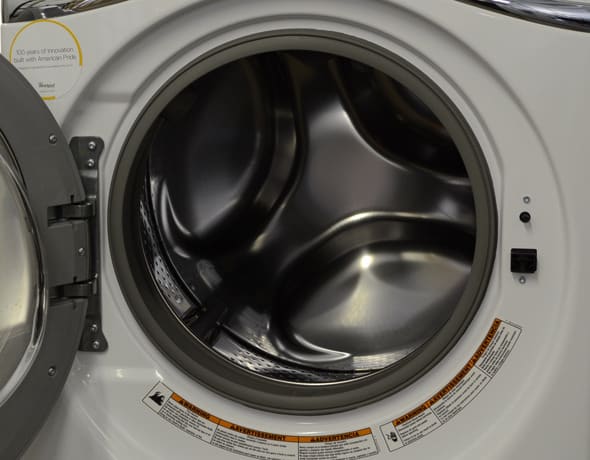Whirlpool's Fan-Dry Washers are Made for Lazy Launderers
Whirlpool's Fan Dry feature is touted as being able to dry a small load overnight.
 Credit:
Credit:
Products are chosen independently by our editors. Purchases made through our links may earn us a commission.
Ever left a load of clothes to languish in the washing machine overnight? They get super-wrinkly and can develop a musty odor. You'll need to wash them again, so you'll have wasted time, energy, and detergent. Vigilance and a sharp memory (or at least an alarm on your smartphone) are the only safeguards against this first-world problem... or are they?
With A Fan In The Washer, You—and Your Dryer—Can Relax
Many of Whirlpool's high end washing machines have a new feature that adds a light drying cycle to the end of a wash. It's called Fan Dry, and though it won't get your clothes entirely dry, it might make your life—and your dryer's job—a little easier.

Whirlpool originally put a fan in select front-loading models a few years back in order to keep the door gasket from developing a musty odor, but soon discovered a little moving air could do that and so much more. Combined with an occasional tumble, Whirlpool says that Fan Dry can keep your laundry load from getting musty for up to twelve hours. That's a lofty claim, and one that we weren't about to accept without putting it to the test.
The Test
We got a Fan Dry-equipped Whirlpool Duet WFW94HEAW into our labs, and ran a four-pound load of shirts, sheets, and towels through the Wash & Dry cycle—a 26 minute wash followed by twelve hours of a quiet, whirring fan and an occasional tumble.

It should be noted that Whirlpool rated the Wash and Dry cycle's drying capability at two pounds. However, we felt that the four-pound load we constructed was more representative of an actual pile of laundry—especially because Fan Dry can be added to other cycles designed for larger loads.
We started up our test load before we went home and left it there overnight. The Fan Dry ran the whole time. We appreciated that. Machines shouldn’t stop working until we say so. That is the order of things.
The Results
After the fan stopped, the test load was still somewhat damp—but even the thick towels we washed didn't smell musty. We weighed the whole load and found that it retained only about 28 percent of its weight in water. That’s about 20 percent dryer than the normal Quick cycle without Fan Dry. If we were to throw that still-damp load in the dryer, it would result in a shorter drying cycle. That means less damage to fragile fabrics, and less energy used by the dryer. If you prefer to line-dry, Fan Dry would definitely cut down on clothesline time, too.
That's not to say that Fan Dry doesn't use any electricity, but it's a comparatively small draw. We measured about 121 watt-hours total after our all-night test. To put that in perspective, though, that’s less electricity than running the Whites cycle on this machine, and far less than the average dryer, which uses between 3,000 and 5,000 watt-hours per cycle.
Fan Dry didn't get an entire load of laundry washed and dried, but that's OK. The real draw for us was the ability to throw clothes in the wash at night and not worry that they'll smell musty in the morning. And considering how much dryers cost to run and how much damage they can do to clothes, cutting down on how long laundry spends tumbling is a nice bonus.
The Final Verdict
Fan Dry won't change your life, but it will change up your laundry routine. It's not exactly a killer feature—we wouldn't recommend running out and buying a new Whirpool just because it'll be slightly less inconvenient when you accidentally fall asleep with clothes in the washer. But it's a step in the right direction.
